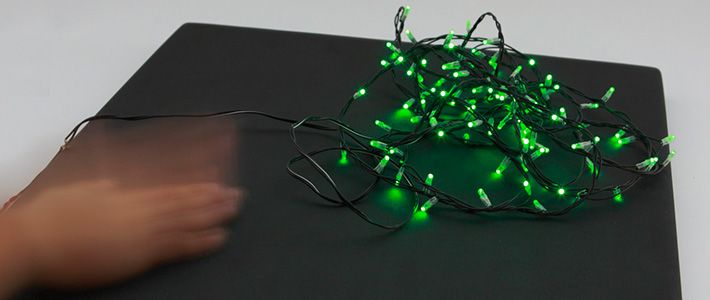
The Renewable Outlook in Japan
The Promise of Kinetic Power Generation
Science Technology Society Lifestyle- English
- 日本語
- 简体字
- 繁體字
- Français
- Español
- العربية
- Русский
Hayamizu Kōhei, CEO of Soundpower Corp., says that every day the world wastes energy that could be put to good use. Hayamizu and his Kanagawa Prefecture company have pioneered kinetic energy generation, which converts vibrations into usable energy. Soundpower’s trademarked applications include power-generating floors that produce energy from pedestrian traffic and energy cells that capture the kinetic energy when a button is pressed. Floor vibrations and pressed buttons represent only a small amount of energy, but Soundpower has succeeded in translating it into efficient power generation with piezoelectric elements that convert applied pressure into voltage. These elements are already in wide use in products like lighters, igniters on gas ranges, and speakers.
Locally Produced, Locally Consumed Energy
The power produced through kinetic energy generation can be used to light LEDs, send radio waves, and produce sound. Practical applications are emerging, including power-generating flooring, with arrows that light up as pedestrians walk on the surface. Hayamizu explains that because the flooring does not require wiring, it can be used practically anywhere, both indoors and outdoors. While the flooring cannot be used to power larger light fixtures, it reduces the environmental burden of power generation and eliminates the need to replace building and security lighting.
 Flooring that uses pedestrian traffic to power LEDs.
Flooring that uses pedestrian traffic to power LEDs.
Another practical application of kinetic energy cells is batteryless remote controls. Pushing the buttons on the control produces all the power it needs to send a signal, allowing it to be used indefinitely without batteries. Soundpower sees countless commercial applications, including control units for video games, television remotes, and the buttons used to call wait staff in family restaurants in Japan. There are now around a billion dry-cell batteries used in remote controls in Japan alone. These batteries include toxic metals that can cause serious environmental pollution if not disposed of properly. If batteryless remote controls become commercially viable, they will act both to conserve energy and to eliminate the problem of used battery disposal.
According to Hayamizu, the technology may also have applications in tactile ground surface indicators (the “Braille blocks” that guide visually impaired people along sidewalks and on train platforms), which could be outfitted with speakers to produce helpful sounds for users. Toys are another area where he and his company are carrying out research. Even the vibration of noisy factory machines could be used to generate power, he notes, thus saving energy and reducing noise at the same time.
 A batteryless remote control converts the energy of a pressed button into a signal.
A batteryless remote control converts the energy of a pressed button into a signal.
 Hayamizu sees limitless applications for his technology.
Hayamizu sees limitless applications for his technology.
Kinetic energy generation is the very definition of locally produced, locally consumed energy, says Hayamizu, as the energy you need is created and used right on the spot. Increased use of this type of energy will also lead to greater diversity in power sources. While kinetic generation lacks the power-producing potential of mega solar panels, it could certainly provide much of the energy that dry-cell batteries do today. “It’s another option, which is good to have,” Hayamizu explains. He hopes to see emerging power-harvesting technologies like kinetic energy become a part of everyday life.
(Originally written in Japanese by Satō Narumi.)
energy science Sato Narumi renewables technology generation Hayamizu Kohei Soundpower floor remote control kinetic battery piezoelectric LED power